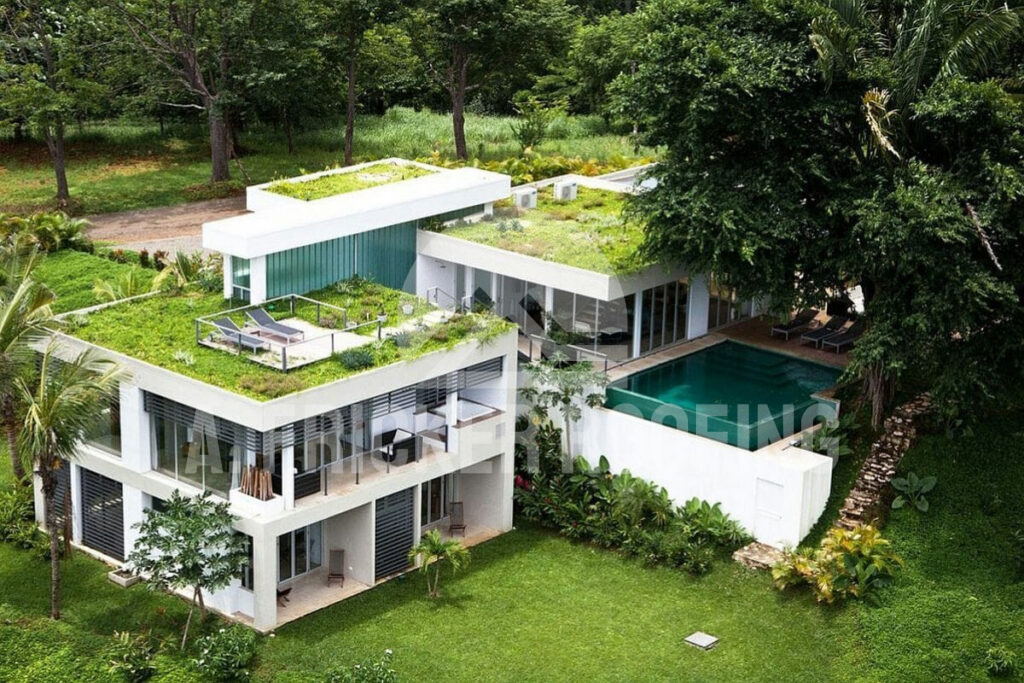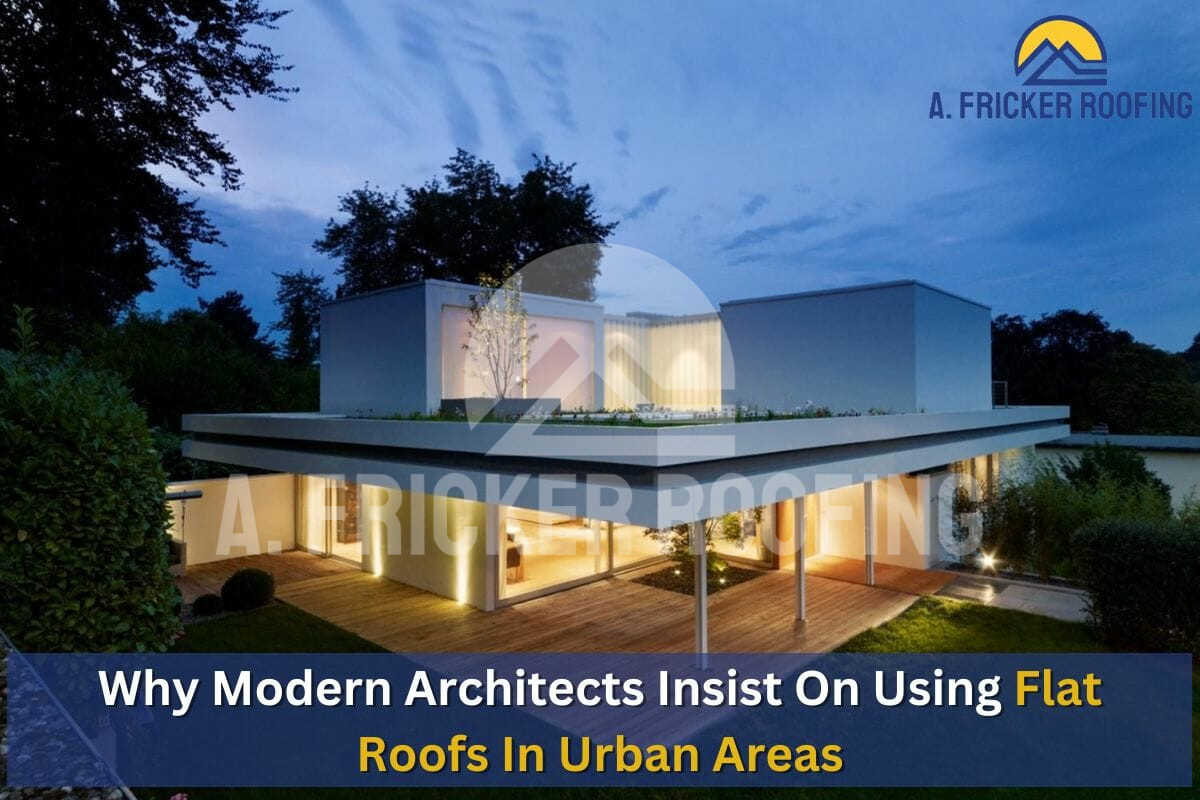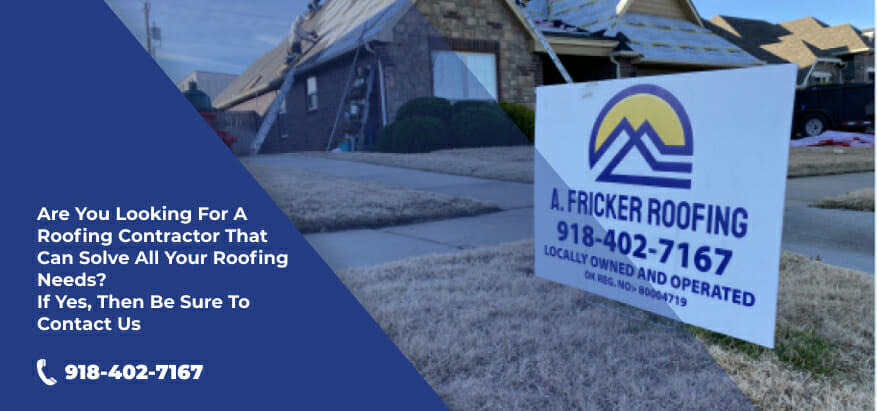In recent years, modern architects have been increasingly advocating for flat roof installation in urban areas. Departing from the traditional sloped roofs that have dominated architectural history, these innovative designers find flat roofs a compelling choice for various reasons.
In this article, we will explore the advantages, challenges, and sustainable aspects of flat roofs in urban environments. We will also delve into their impact on mitigating the urban heat island effect, safety considerations, and cost-effectiveness. Join us on this journey to understand why flat roofs are becoming the preferred choice for urban architecture.
The Advantages of Flat Roofs in Urban Areas
Here is a list of advantages of flat roofs in urban areas.
1. Space Utilization and Versatility
Many non-architects think pitched roofs provide a greater amount of extra space, as they come with an enclosed attic which can be used to store domestic materials or as an extra living space. While this is true, we can’t neglect the advantages of flat roofs.
One of the primary reasons modern architects embrace flat roofs is the additional usable space they offer. Unlike sloped roofs, which limit the utilization of the top area of a building, flat roofs provide an ideal and open platform for rooftop gardens, recreational spaces, and even urban farming.
In densely populated urban areas, where space is limited, flat roofs present a valuable opportunity to maximize space and improve the quality of life for city dwellers.
2. Energy Efficiency
One of the drawbacks of a sloped roof is how they trap heat in summer, which then transfers inside the home, increasing the workload of your HVAC system. As a result, this increases your energy consumption and the cost of maintaining it.
Flat roofs, on the other hand, can contribute significantly to a building’s energy efficiency. By incorporating proper insulation and reflective materials, they can reduce heat absorption, resulting in lower cooling costs during hot summers.
Additionally, flat roofs allow for the easy installation of solar panels, harnessing solar energy to power the building and, in some cases, feeding excess energy back into a power grid.
3. Aesthetics and Modern Appeal
To date, flat roofs have primarily been used on commercial buildings, which created the perception among property owners that they’re only available for use on industrial buildings. However, since architects insisted on the use of flat roofs in urban areas by addressing their advantages, you will now find them installed on many residential properties, equally contributing to a home’s aesthetic as much as a sloped roof would.
Modern architects often opt for flat roofs to achieve a sleek and minimalist aesthetic, complementing contemporary urban landscapes. This modern appeal resonates with urbanites and has become a hallmark of progressive architecture.
4. Integration of Green Roof Systems
Flat roofs facilitate the integration of green roof systems, promoting sustainability and environmental conservation. Green roofs consist of vegetation that helps regulate temperature, improve air quality, and reduce stormwater runoff.
This eco-friendly addition to a building can transform an urban area into a greener, and more environmentally-friendly, space.
The Contribution Of Flat Roofs To Maintaining Sustainable Architecture
1. Environmentally Friendly Building Materials
Modern flat roofing materials contribute to eco-friendliness and have a smaller impact on climate change, which is a big concern of today’s time. In addition, flat roofing materials can typically be recycled for future use.
Recycled and sustainable materials reduce the environmental impact of construction and contribute to more sustainable urban development.
2. Solar Panel Integration

In urban areas, the increasing awareness of the negative effects of carbonic fuel usage in the generation of electricity has set a big stage for solar panel integration on roofs. Flat roofs, we all agree, offer an ideal surface for solar panel installation.
By harnessing solar energy, buildings can become more self-sufficient and reduce their reliance on traditional energy sources, reducing their carbon footprint.
3. Rainwater Harvesting Systems
If you care about water conservation, flat roofs provide the added benefit of being great rainwater collectors. A typical rainwater harvesting setup comprises well-designed gutters, strategically placed downspouts, and efficient storage tanks seamlessly integrated into the flat roof’s architecture, ensuring the optimal collection and retention of rainwater.
In urban settings, rainwater harvesting systems implemented on flat roofs offer a highly effective and sustainable solution for conserving water and managing stormwater.
Urban Heat Island Effect and The Role of Flat Roofs
1. Cooling Benefits of Flat Roofs
Urban areas often experience an urban heat island effect, wherein the concentration of buildings and asphalt surfaces raises the temperature in a city, compared to the rural neighborhoods around it.
Flat roofs, when equipped with reflective and cool roof coatings, can help mitigate this effect by reducing heat absorption and contributing to cooler urban environments.
2. Green Roof Installations and Urban Green Spaces

Unlike rural areas, which are surrounded by plants and lots of greenery, urban areas are lacking. Instead, they have tall buildings made of cement and roofs made of asphalt. These materials absorb heat and increase the average temperature of the city.
The installation of green roofs or growing vegetation on flat roofs contributes significantly to urban green spaces. These green areas provide numerous benefits, including improved air quality, reduced noise pollution, and enhanced biodiversity, making cities more sustainable.
Safety Considerations
Though flat roofs provide a lot of benefits and the ability to have a livable space, some safety precautions should be taken.
1. Access and Fall Protection
Flat roofs require adequate safety measures to provide safe access for maintenance and repair. Installing proper guardrails, access hatches, and fall protection systems is crucial to prevent accidents and ensure the safety of you and anyone working on the roof.
2. Fire Safety Precautions
Fire safety is a paramount concern in urban areas, and flat roofs must meet fire safety standards. Fire-resistant roofing materials and proper ventilation systems are essential to minimize fire risks and protect occupants and neighboring buildings.
Contact the top 6 flat roofing companies in Tulsa for your roof installation or replacement.
Cost-Effectiveness and Long-Term Savings
1. Initial Investment vs. Lifespan
The lifespan of a flat roof greatly depends on the roofing materials you have installed. Some roofing membranes, such as EPDM, will last slightly longer than membranes like TPO. You can also help increase the lifespan of flat roofs by applying a suitable and reflective coating. This coating will prevent the rubber roofing materials from being prematurely damaged.
The initial investment in a flat roof is also cheaper than its pitched counterpart. Flat roofs take less material and less time to build, meaning you’ll also spend less money on labor. This makes flat roofs an economical choice for homeowners who are considering a new roof for their home and want to save money where they can.
2. Energy Savings and Reduced HVAC Costs
As mentioned earlier, the energy-efficient properties of flat roofs can result in substantial savings on heating, ventilation, and air conditioning (HVAC) costs. The integration of solar panels further enhances energy savings, making flat roofs an economical choice.
Challenges of Flat Roofs in Urban Areas
While flat roofs come with all the benefits mentioned above, there are some drawbacks you need to consider.
1. Drainage and Waterproofing Issues
One of the major challenges associated with flat roofs is the proper management of water. Unlike sloped roofs, where water naturally drains off, flat roofs require effective drainage systems to prevent water pooling and potential leaks.
Adequate waterproofing measures are essential to ensure the structural integrity of buildings and protect their interiors from water damage. However, this doesn’t justify the fact that flat roofs are incapable of proper water drainage.
2. Maintenance and Repairs
Like other roofing systems, flat roofs require maintenance to prolong their lifespan and avoid costly repairs. But, since flat roofs are subject to water ponding, collecting debris, and forming minor tears over time, their maintenance requirement is higher than that of sloped roofs.
Regular inspections, removal of debris, and addressing minor issues promptly are essential to prevent major structural problems.
3. Extreme Weather Considerations
In regions prone to extreme weather events such as heavy rainfall or snowstorms, flat roofs may face additional challenges. The accumulation of snow and standing water can exert significant stress on the roof, necessitating appropriate structural reinforcements to withstand these conditions.
Conclusion
While flat roofs do present some challenges, proactive planning and maintenance can ensure that these roofs continue to offer their many benefits. As urban areas continue to evolve, flat roofs will undoubtedly remain at the forefront of contemporary architectural design.
Install Flat Roofs By Expert Roofers In Tulsa, OK
We hope this blog post may have been thought-provoking and had you consider the use of flat roofs for urban homes. If the above-mentioned reasons convince you to consider a flat roof for your home or office, you can contact us now for more information. A. Fricker Roofing and Waterproofing in Tulsa is the most preferred roofing company by homeowners. Give us a call today at (918)-402-7167 and consult with one of our expert roofers about flat roof installation.

